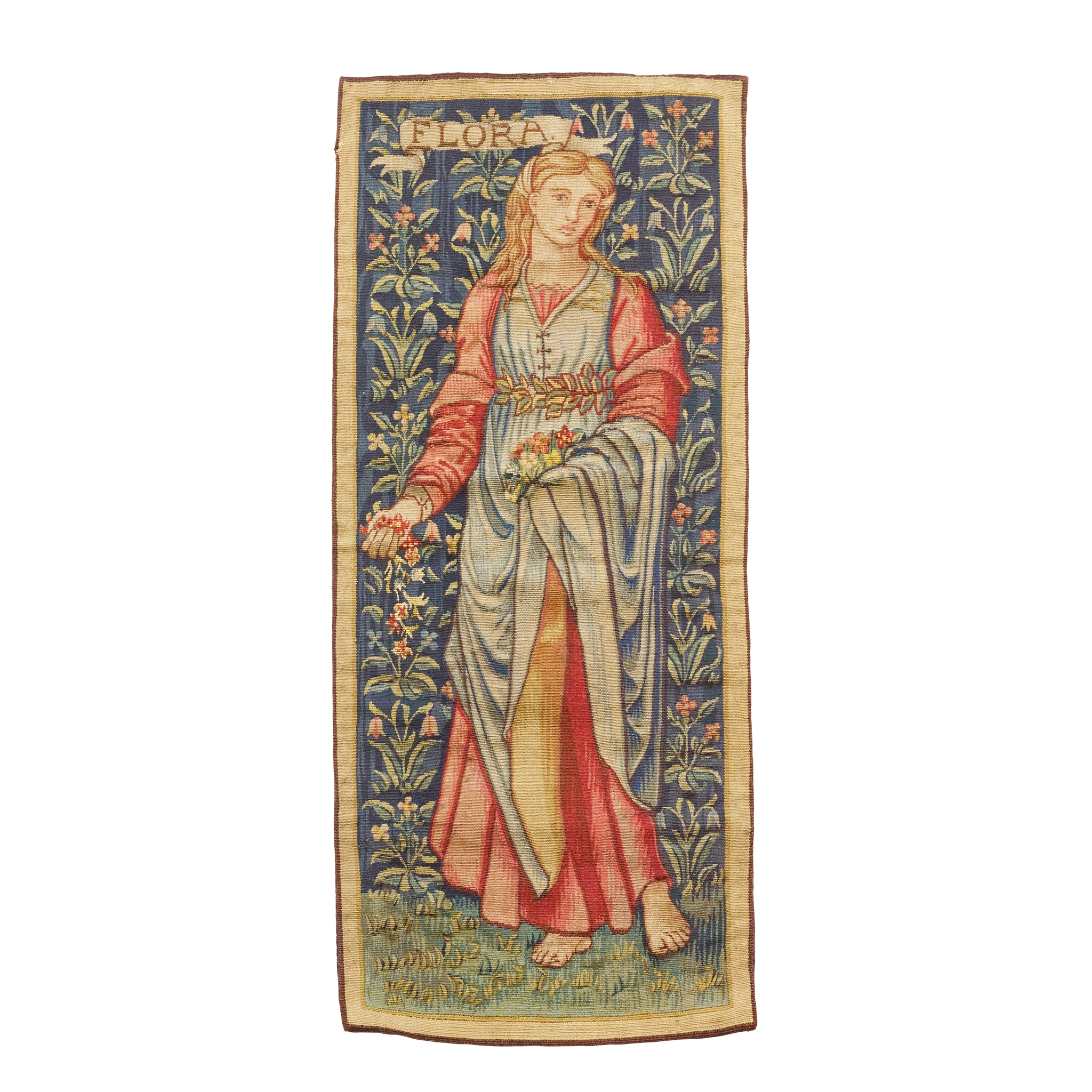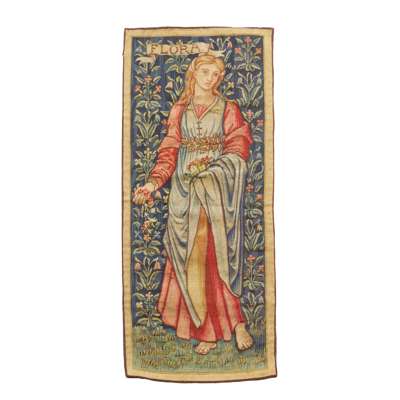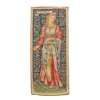
Lot 358

EDWARD BURNE-JONES (1833-1898) AND JOHN HENRY DEARLE (1859-1932)
'FLORA' TAPESTRY, CIRCA 1930






Auction: Day Two inc FL Griggs : A Cotswold Legacy | Lots 334 to 654 | Thursday 16th October from 10am
Description
wool and silk, lined with blue cotton
Dimensions
100cm x 40.4cm
Footnote
Literature: Marillier H.C. History of the Merton Abbey Tapestry Works, London, 1927, p. 34
Parry L. William Morris Textiles, V&A 2013, pp. 133-136
This late tapestry by Morris & Co. was possibly woven by Douglas Griffiths, one of the company’s final apprentices, who left to serve in the military at the outbreak of the Second World War or by Arthur Wingate and Wallace Stevens two of the other remaining weavers at Morris & Co. in the 1920s and 30s. A photograph held by the William Morris Gallery depicts Griffiths at his loom at Merton Abbey, working on Pamona, a companion piece in both size and treatment to the present tapestry. This work was completed in 1938 and was very possibly presented to Lady Chilston in 1937.
In 1882, Burne-Jones received £25 for the figure designs of Flora and Pamona, his first designs specifically for tapestry, while Morris was responsible for the verdure backgrounds. The two original tapestries were acquired by the Whitworth Art Gallery in Manchester. From 1896 later versions began to be made, this time with verdure grounds designed by Dearle in a simpler form, allowing the figures to remain the primary focus rather than being overshadowed by the background.
According to Marillier, the firm wove six additional Pamona tapestries and ten Flora tapestries before 1927. The present tapestry is believed to have been produced after this date and is therefore not included in that count.





